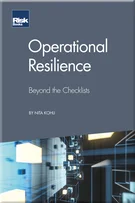The Corporate Bond Credit Risk Premium
Credit Models Past and Present
Credit Models: Looking to the Future
Predicting Annual Default Rates and Implications for Market Prices
An Ensemble Model for Recovery Value in Default
The Corporate Bond Credit Risk Premium
The Credit Default Swap Risk Premium
The Municipal Build America Bond Risk Premium
Predicting Bank Defaults
Beating Credit Benchmarks
Hedging the Credit Risk Premium
Managing Pension Fund Liabilities
Credit Cycle-dependent Stochastic Credit Spreads and Rating Category Transitions
Managing Systemic Liquidity Risk: Systems and Early Warning Signals
With the introduction of interest rate swaps in the early 1980s, lenders and investors were able to minimise their exposure to changes in interest rates, even for very long-dated commitments.11Salomon Brothers brokered the first currency swap in 1981 between IBM and the World Bank, and interest rate swaps followed shortly thereafter. Arguably, the interest rate swap is one of the most useful innovations produced using financial engineering techniques. No longer must long-term investors worry about fluctuations in interest rates, they can mitigate that exposure by choosing to swap fixed rate for floating rate debt. Despite this success, only latterly have market participants begun to unravel the components that underlie the excess yields over those of credit benchmarks (eg, US Treasuries or swaps) required as compensation for investing in default-risky assets. Although the early work of Jones, Mason and Rosenfeld (1984) suggested that compensation for default accounted for only a small fraction of the credit spread, they attributed that result to a failure of their model of spreads
Copyright Infopro Digital Limited. All rights reserved.
As outlined in our terms and conditions, https://www.infopro-digital.com/terms-and-conditions/subscriptions/ (point 2.4), printing is limited to a single copy.
If you would like to purchase additional rights please email info@risk.net
Copyright Infopro Digital Limited. All rights reserved.
You may share this content using our article tools. As outlined in our terms and conditions, https://www.infopro-digital.com/terms-and-conditions/subscriptions/ (clause 2.4), an Authorised User may only make one copy of the materials for their own personal use. You must also comply with the restrictions in clause 2.5.
If you would like to purchase additional rights please email info@risk.net










